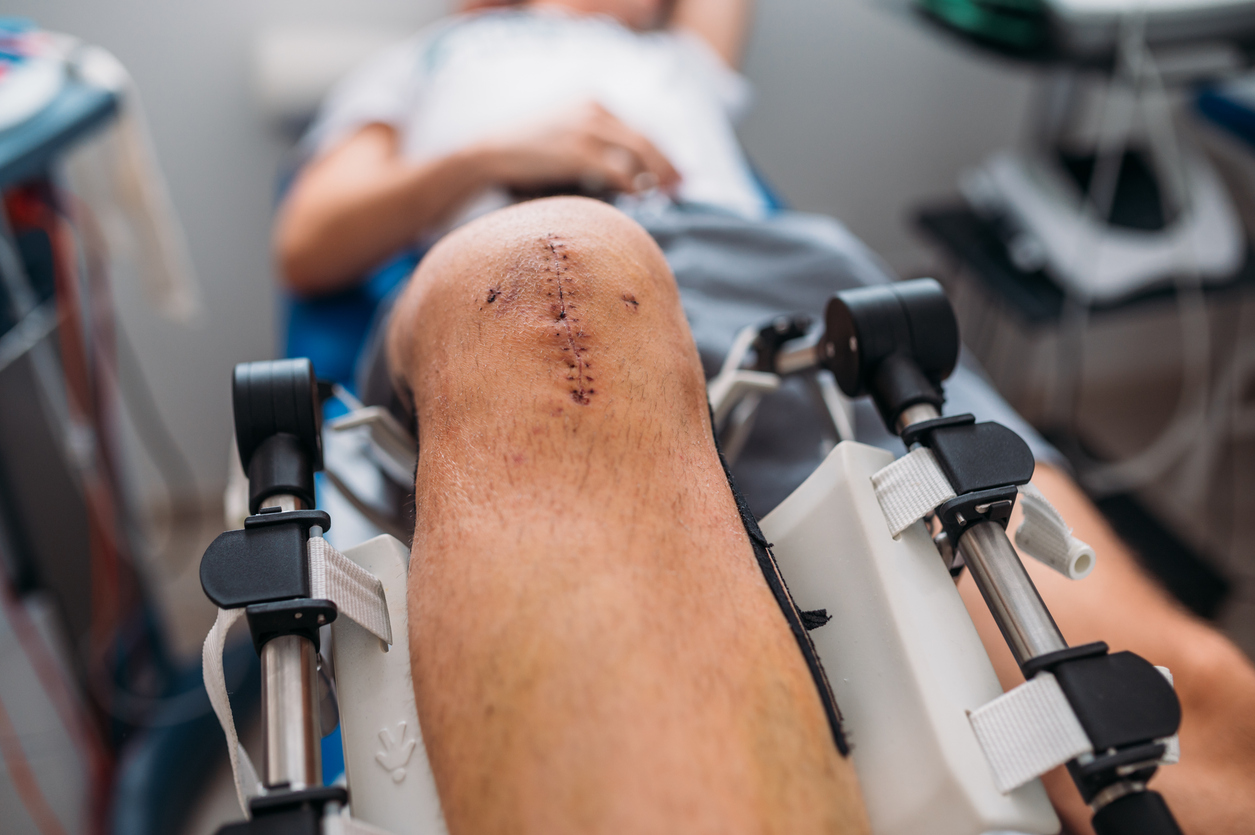
When it comes to surgery and recovery, modern medical advancements continue to push the boundaries of what’s possible. While the main goal of any surgical procedure is to address a medical issue, the recovery process is equally crucial, as it determines how quickly and effectively the body heals. One of the most promising developments in this area is the use of stem cell-derived exosomes — particularly in the form of nebulized exosomes — to accelerate healing, reduce inflammation, and enhance overall recovery outcomes. This article will delve into the science behind nebulized exosomes and why investing in them, especially before and after surgery, could be the key to a faster, more efficient recovery process.
What Are Exosomes?
To understand the benefits of nebulized stem cell-derived exosomes, it’s essential to first understand what exosomes are and how they work. Exosomes are tiny vesicles, or small bubbles, that are released from cells, including stem cells. They contain a variety of bioactive molecules such as proteins, lipids, and RNA, which play a critical role in cell communication. Essentially, exosomes act as messengers between cells, delivering important biological information that can influence healing, tissue regeneration, and immune response.
While exosomes have been studied in many fields of medicine, their potential in regenerative medicine, particularly in the context of stem cell therapies, is where they truly shine. Exosomes derived from stem cells have the ability to promote tissue repair, reduce inflammation, and modulate immune responses, making them ideal for use in recovery after surgery.
The Science Behind Nebulized Exosomes
Traditionally, exosome therapies have been administered through injections or topical applications, but recent advances have introduced nebulization as a new, innovative way to deliver these powerful molecules. Nebulized exosomes are inhaled as a fine mist, allowing the exosomes to enter the lungs directly. This method of administration offers a number of unique advantages, particularly for patients who are recovering from surgery.
When exosomes are nebulized, they can be delivered directly to the respiratory tract, where they can influence immune responses, promote tissue healing, and reduce inflammation in a way that traditional injection methods might not. This is especially important for patients who have undergone surgery involving the chest or upper body, such as thoracic surgery, spinal procedures, or joint surgeries, where the lungs play a crucial role in overall recovery.
How Nebulized Exosomes Work in the Body
Once inhaled, nebulized exosomes interact with the lung tissues and enter the bloodstream, where they can then circulate throughout the body. Their primary function is to promote cellular communication and tissue regeneration. They do this by releasing growth factors, cytokines, and other signaling molecules that stimulate the body’s healing processes.
In particular, nebulized exosomes help by:
-
Reducing Inflammation: Inflammation is a natural response to surgery, but excessive inflammation can hinder the healing process. Exosomes help regulate the immune system, reducing inflammation and preventing chronic inflammatory responses that could delay recovery.
-
Promoting Tissue Repair: Exosomes derived from stem cells carry regenerative molecules that promote the repair of damaged tissues. This can be particularly helpful for soft tissue recovery (muscles, tendons, ligaments) or healing of bones and joints following surgery.
-
Enhancing Cellular Communication: By boosting cellular communication, exosomes promote a more efficient healing process. They help recruit repair cells to the site of injury or surgery, ensuring that the healing response is both fast and effective.
-
Improving Blood Flow: Exosomes play a role in angiogenesis, the process of forming new blood vessels. This helps to improve blood flow to the injured or surgically repaired areas, providing them with the necessary nutrients and oxygen for faster recovery.
Why Nebulized Exosomes Are Ideal for Pre- and Post-Surgery Use
Surgery is a significant event for the body, and recovery can sometimes be a lengthy and challenging process. By utilizing nebulized exosomes both before and after surgery, patients can potentially improve their recovery time and outcomes. Here’s why investing in nebulized exosomes before and after surgery is a smart choice:
1. Pre-Surgery: Boosting the Body’s Healing Potential
While it might seem counterintuitive to start treatment before surgery, the benefits of pre-surgery nebulized exosomes are profound. By boosting the body’s natural healing potential before undergoing surgery, patients are setting themselves up for a faster, more efficient recovery. Here’s how nebulized exosomes can help:
-
Strengthening Tissues: Prior to surgery, exosomes can help strengthen the tissues surrounding the surgical area, promoting better overall resilience and readiness for the procedure.
-
Reducing Pre-Surgical Inflammation: If a patient is dealing with any chronic inflammation or discomfort leading up to surgery, nebulized exosomes can help reduce this inflammation, making the surgery easier and less taxing on the body.
-
Immune System Optimization: Nebulized exosomes can help optimize immune function before surgery, making the body more capable of handling potential challenges like infection or prolonged inflammation.
2. Post-Surgery: Accelerating Recovery and Reducing Complications
The most significant benefit of nebulized exosomes comes after surgery. The healing process following surgery involves a complex sequence of events, and any disruption to this process can lead to delayed recovery or complications. Nebulized exosomes can help guide the body’s healing response, providing the following post-surgical benefits:
-
Faster Tissue Healing: One of the key advantages of nebulized exosomes is their ability to promote tissue repair. After surgery, exosomes can accelerate the healing of damaged tissues, including skin, muscles, ligaments, and organs.
-
Reduced Scar Formation: Excessive scarring is a common side effect of surgery, but stem cell-derived exosomes have been shown to help minimize scar tissue by promoting more natural healing.
-
Pain Reduction: While exosomes don’t directly act as painkillers, their ability to reduce inflammation and promote tissue healing can significantly reduce post-surgical pain. This leads to a more comfortable recovery process and less reliance on pain medications.
-
Decreased Risk of Infection: Exosomes can modulate the immune system to improve its ability to fight off infections. Post-surgery, this can be particularly beneficial as patients are more vulnerable to infections due to incisions and other surgical interventions.
-
Improved Mobility and Function: For patients undergoing joint or musculoskeletal surgery, nebulized exosomes can help improve the healing of cartilage, tendons, and ligaments, enhancing mobility and reducing stiffness during recovery.
3. Overall Enhanced Recovery
For patients undergoing any type of surgery, whether it’s a minor procedure or major surgery, the benefits of nebulized exosomes extend far beyond just healing tissue. They can help the body recover in a holistic way by boosting the body’s natural healing systems, reducing the risk of complications, and improving overall recovery times.
Why Should You Invest in Nebulized Exosomes for Your Surgery?
Investing in nebulized stem cell-derived exosomes for your surgery isn’t just about recovering faster — it’s about recovering better. If you’re facing surgery, you’ll want to ensure that your body is equipped with all the tools it needs to heal as efficiently as possible. By choosing nebulized exosome therapy, you’re giving yourself a significant advantage.
-
Faster Recovery Time: One of the most appealing benefits of nebulized exosomes is their potential to speed up recovery. Whether you’re dealing with a joint replacement, spinal surgery, or any other procedure, exosomes can help you return to normal activities sooner and with less pain.
-
Reduced Complications: Every surgery comes with risks. Nebulized exosomes help mitigate these risks by reducing inflammation, supporting immune function, and accelerating healing, making it less likely that complications such as infections or delayed wound healing will arise.
-
Cost-Effectiveness in the Long Run: While the initial cost of nebulized exosome therapy may seem like an investment, the long-term benefits outweigh the expense. With faster recovery and fewer complications, you may ultimately spend less on follow-up treatments, pain management, and other post-surgical interventions.
-
Improved Quality of Life: Above all, the use of nebulized exosomes can greatly improve your quality of life after surgery. The combination of faster healing, less pain, and a reduced risk of complications means that you can get back to living your life without unnecessary interruptions.
Conclusion
Surgery is a life-changing event, and your recovery process is just as important as the procedure itself. Whether you are preparing for surgery or are already in the post-operative phase, nebulized stem cell-derived exosomes can offer a powerful advantage in your recovery. By reducing inflammation, promoting tissue repair, and enhancing immune function, nebulized exosomes help your body heal faster, more effectively, and with fewer complications. For patients who want to give themselves the best possible chance at a smooth and efficient recovery, investing in nebulized exosome therapy could be the key to a faster, more comfortable return to health. If you’re preparing for surgery, consider the profound benefits of nebulized exosomes — your future self will thank you.



